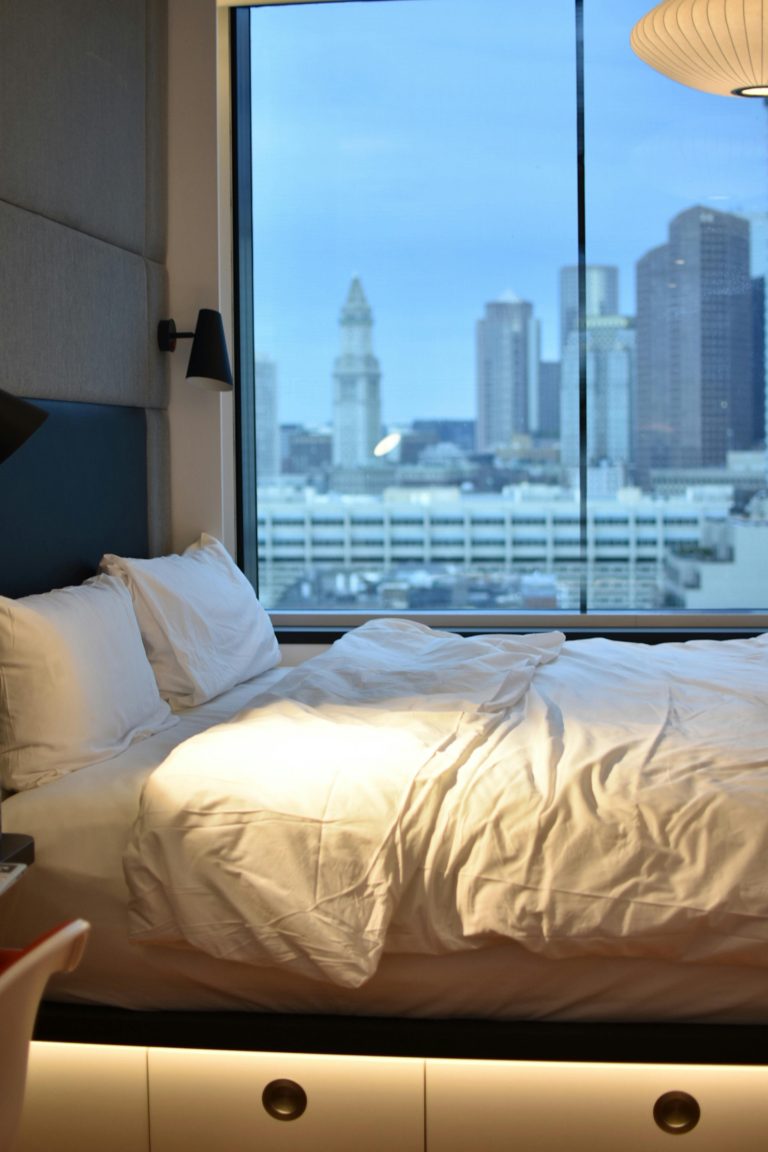City living can offer a wealth of opportunity, culture, and convenience. However, the constant hustle and bustle also introduces one major drawback: noise. Whether it’s the sound of distant sirens, late-night conversations from neighbouring buildings, or the persistent hum of traffic, getting a good night’s sleep in an urban setting often proves challenging. This is especially true for families with young children, who need a calm and consistent environment to maintain healthy sleep routines.
Rather than resigning themselves to broken sleep, more households are exploring modern, practical methods for managing indoor sound. Simple changes can help transform even the noisiest bedroom into a more restful space. From smart devices to acoustic furnishings, these solutions make it possible to improve sleep quality without extensive renovations.
Why Urban Bedrooms Need Better Sound Control
Unpredictable noise patterns regularly disrupt bedrooms in busy areas. A door slamming across the street, music from a nearby flat, or even footsteps in a hallway can interfere with rest, particularly during the lighter sleep phases. This problem is magnified for babies and children, whose developing brains are more reactive to environmental changes.
One increasingly popular solution is using white noise to regulate the auditory environment. White noise produces a consistent sound across all audible frequencies, which helps reduce the impact of random, jarring interruptions. Using a high-quality white noise machine in the bedroom can help reduce wake-ups by covering disruptive sounds with a gentle, steady background layer. Families seeking effective and child-friendly options often consider dedicated white noise machines designed for home use.
Supporting Children’s Sleep with Consistent Sound
Infants and toddlers are more sensitive to sudden noises because their sleep cycles are lighter, and they often experience natural startle reflexes. Any unexpected sound can interrupt their sleep and lead to restless nights for the entire household. Establishing an environment that offers consistent auditory input helps reduce the likelihood of these disruptions.
White noise is especially beneficial because it mimics the constant background sounds babies are used to hearing in the womb. This creates a comforting atmosphere that encourages falling asleep more easily and staying asleep for longer stretches. While white noise is the most well-known, some families experiment with alternatives such as pink or brown noise, which offer deeper tones and may appeal to older children.
Choosing the right device for your child’s room requires some planning. It is best to position the machine at a safe distance from the cot or bed, ideally about one metre away, and keep the volume low enough to feel calming rather than overwhelming. Observing how the child reacts to different sound settings helps determine which option supports their sleep most effectively.
How White Noise Works in Urban Settings
White noise machines produce a stable stream of sound that covers other noises. Unlike random environmental sounds, which vary in pitch and rhythm, white noise is uniform and predictable. This means the brain is less likely to interpret it as a threat or disturbance, allowing the sleeper to rest even when something like a horn or loud voice breaks the usual silence.
This consistent background noise is a barrier between the sleeper and the unpredictable acoustic environment outside. The brain becomes accustomed to the sound and eventually learns to ignore it, much like someone sleeping through the hum of a ceiling fan or air purifier. White noise is particularly effective in apartment buildings or homes near busy roads.
Making Sound Machines Part of the Home Setup
Integrating a sound solution into your home is often easier than people expect. White noise machines are designed to be both user-friendly and unobtrusive. Placing the device on a bedside table or elevated shelf helps the sound disperse evenly throughout the room. It is important to avoid putting the device too close to the head of the bed, especially for babies, to maintain a safe and comfortable environment.
Other sound-absorbing additions, such as rugs, thick curtains, and upholstered furniture, can enhance the effects of a white noise machine. These items absorb stray sound waves and reduce echo, contributing to a more consistent acoustic setting.
Smart-enabled machines offer additional convenience. Many allow users to set automatic timers, adjust volume remotely, or schedule routines that align with bedtime. This is particularly helpful for families managing multiple routines, especially in households with young children.
Tailoring White Noise for Family Use
When selecting a sound machine for a child’s room, choose one with safety features and customisation options. Adjustable volume levels, timer functions, and pre-set soundscapes provide greater flexibility as the child grows. Some models also include lullabies, heartbeat sounds, or rain effects that can be helpful during different developmental stages.
Battery backup is another useful feature for ensuring uninterrupted operation during power outages. The sudden silence caused by a machine turning off mid-sleep can wake a baby and undo the progress in establishing a routine.
Switching to new sound settings or adjusting the routine slightly can help maintain effectiveness as preferences change. Not all children respond the same way, so observing behaviour and making small changes based on reactions ensures that the solution remains appropriate over time.
Observing Results and Adjusting as Needed
After introducing a sound machine into the bedroom, it’s important to give it time. Sleep improvements may take several nights to become noticeable. In the meantime, observe changes in behaviour, such as how long it takes to fall asleep, how often the child wakes, and overall mood upon waking.
Adults using white noise can apply the same approach. Light sleepers often find that a background hum helps them remain asleep even when external sounds occur. Over time, the brain begins associating the sound with rest, further reinforcing its effectiveness.
If the device doesn’t help, try repositioning it or selecting a different sound profile. Some people find classic white noise grating. In that case, options like pink or brown noise may offer a better alternative.
Achieving Restful Sleep in Noisy Cities
Urban bedrooms don’t have to be places of restless nights and frequent wake-ups. They can become sanctuaries of rest with the right combination of tools and strategies. White noise offers a simple and effective way to manage unpredictable sound disturbances, helping children and adults enjoy deeper, more refreshing sleep.
For families and individuals living in noisy environments, integrating sound solutions into the bedroom setup can dramatically improve sleep quality and overall wellbeing. It’s not just about adding a machine. It’s about creating the right conditions to support healthy sleep habits in the long term.


